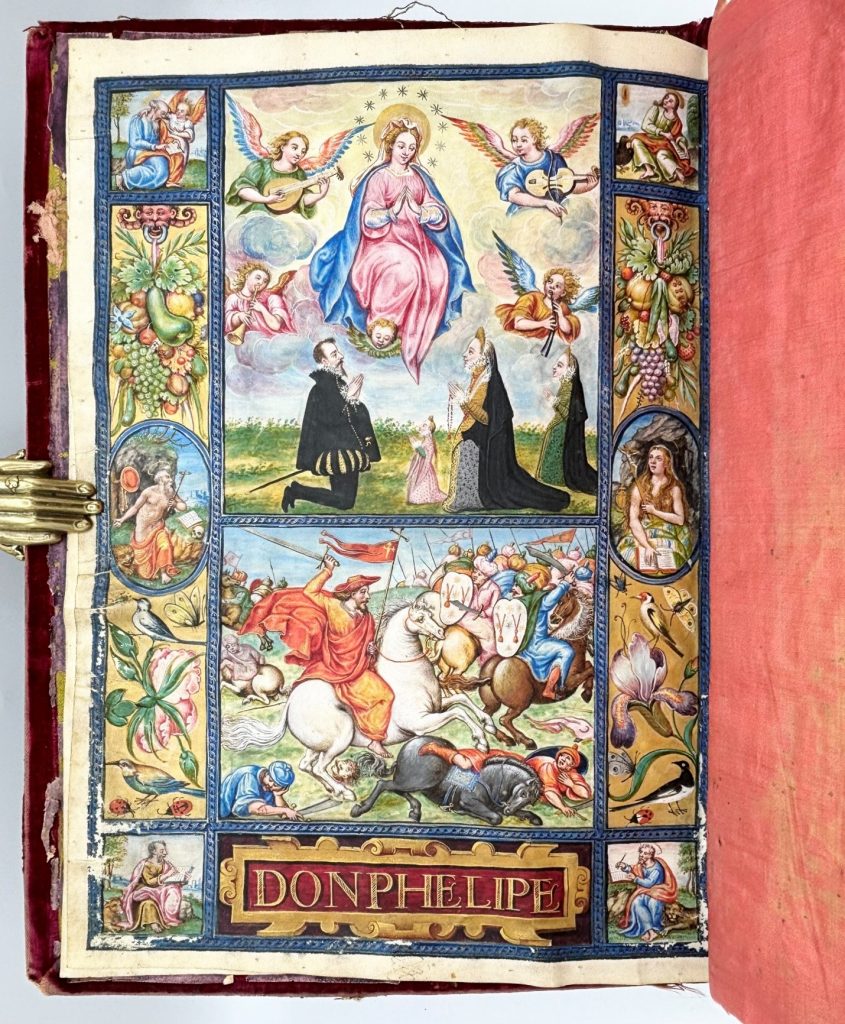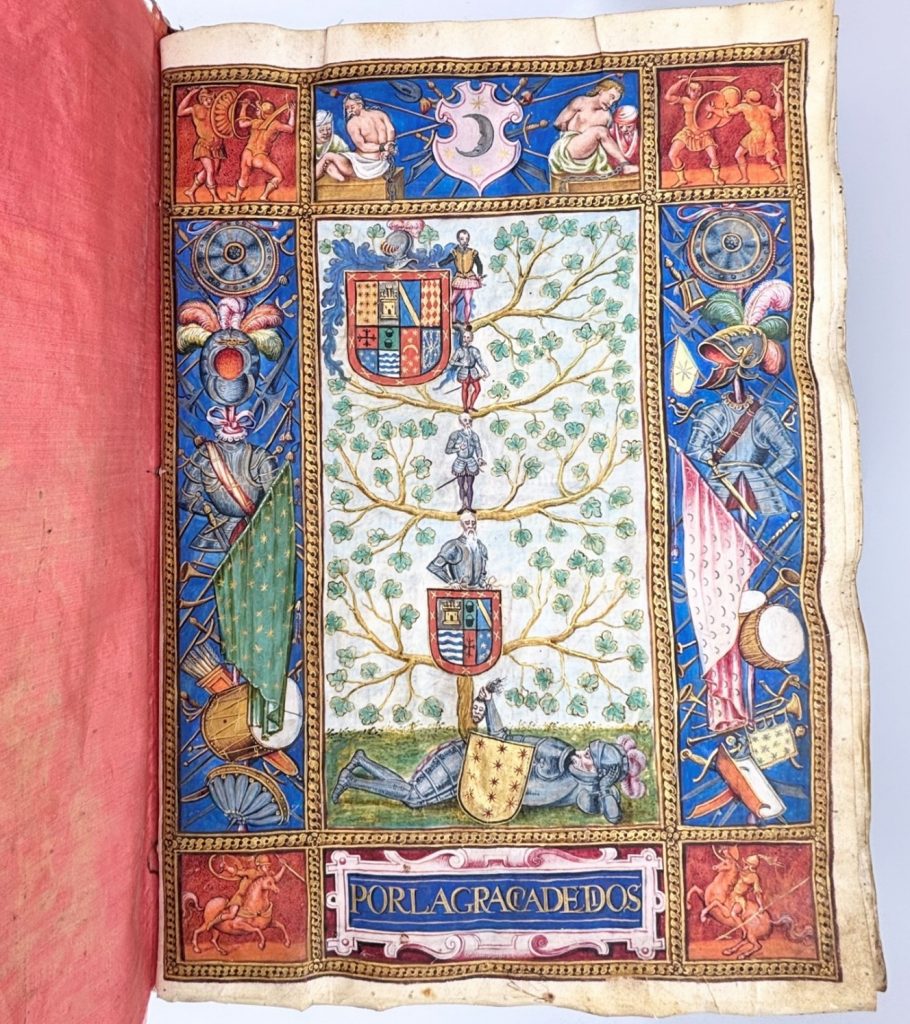Search for books, articles, and more
Spanish Golden Age Carta executoria

Carta executoria issued under the authority of King Phillip II of Spain. Valladolid, 11 October 1587. Illuminated manuscript on vellum, in Spanish. 2 full-page and one quarter-page illuminations. Contemporary embroidered red velvet with armorial crest to front board.
Submitted for adoption by Earle Havens, PhD
This extremely luxurious example of a 16th-century Spanish Golden Age Carta executoria, finely bound in red velvet, incorporates two full page paintings, and a small portrait of King Philip II, as well as two contemporary extra-illustrated hand-colored engravings laid into the front and back binding. The document is dated 1587, and again in 1590 in a later notarial receipt of the document.
This formal legal petition comprised of depositions and other evidence was filed with authorities by Diego de Frias Salazar of the Villa de Alfaro, establishing his family’s limpieza de sangre (“purity of blood”) and, thus, his right to serve in the Cortes and enjoy freedom from taxation.
The two full page paintings reveal the Salazar family’s loyalty to Philip II, many generations of Catholics (i.e., no Jewish or Moorish ancestors), and the family’s role as defenders of the kingdom against heretics.


The two large hand-colored engravings are especially unusual.



